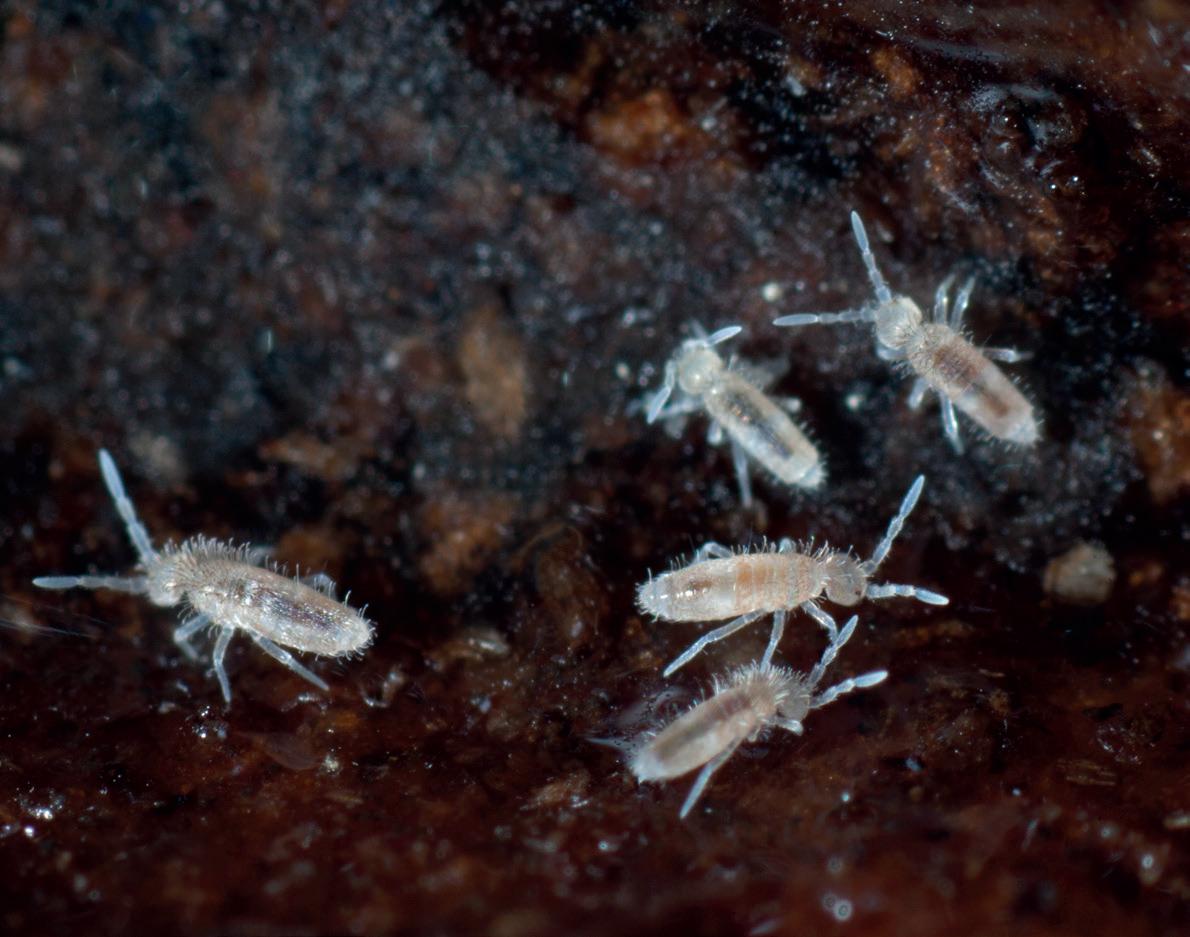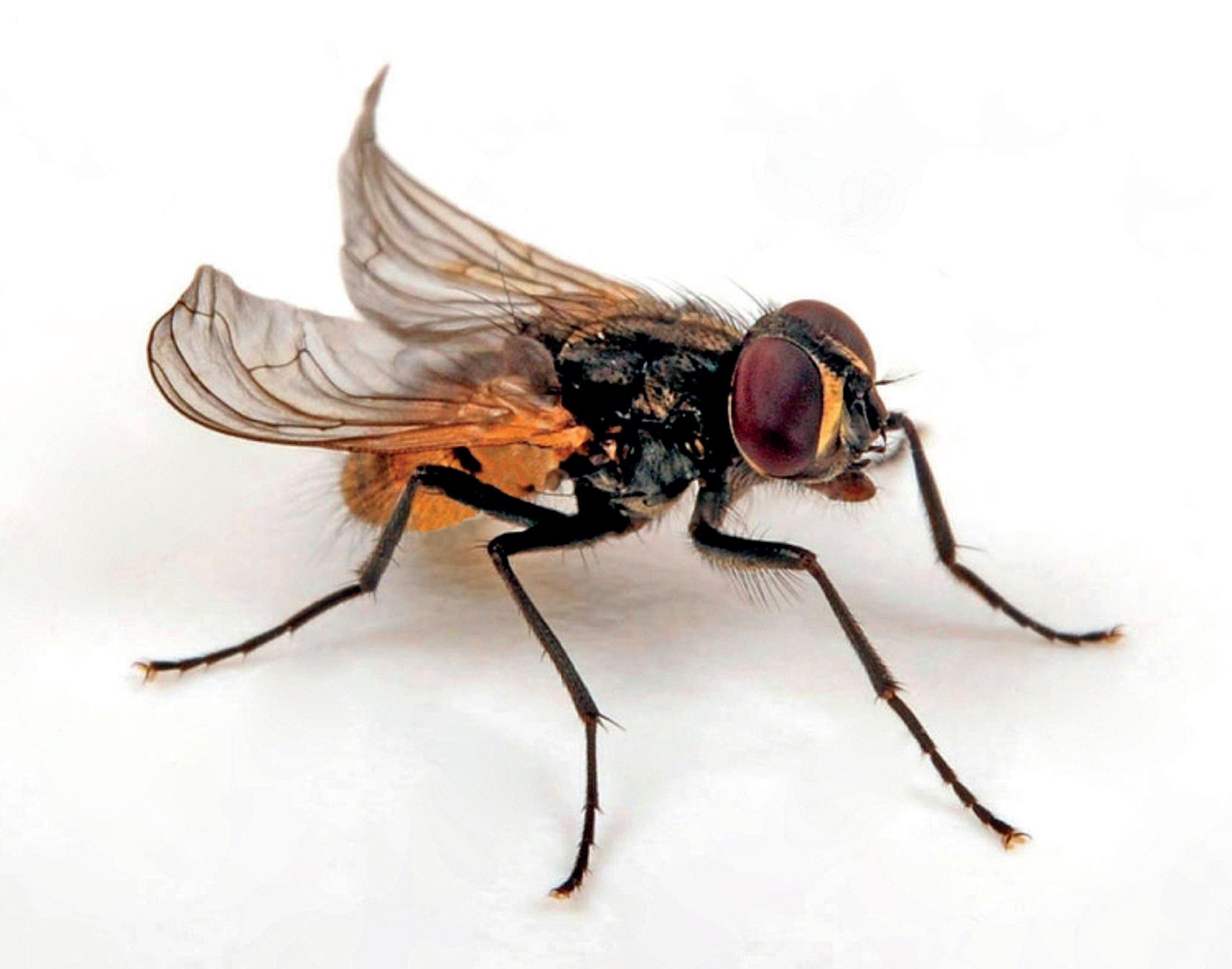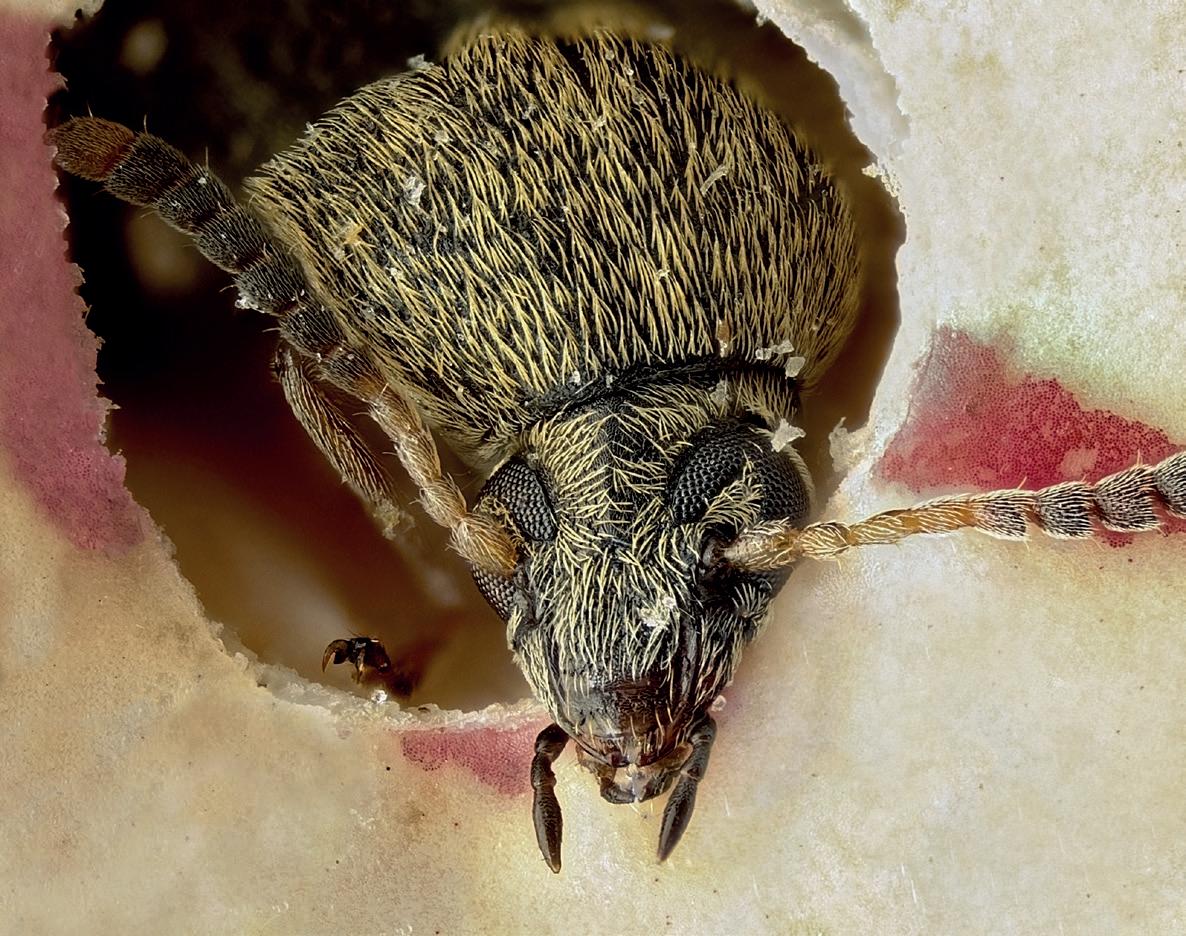
3 minute read
THE NEW BUGS ON THE BLOCK
Alternative feeder insects and the future of live foods.
Many of the UK’s most popular exotic pets are insectivores. In the wild, insectivorous diets are generally very diverse. In some cases, hundreds of different species of invertebrates will be consumed in different proportions as the seasons change to form a complete nutritional profile. Whilst it would be near impossible to replicate this perfectly, research and breakthroughs in insect-breeding means there are now more reptile food choices than ever before. Not only do model species fill certain niches (such as beetles, grubs, flies, molluscs and more), but the number of sizes and alternative species within these categories allows for almost all insectivores to receive a diverse and varied diet.
Advertisement
Small-sized prey
Bean weevils
(Acanthoscelides obtectus)
Bean weevils are small beetles, often considered pests in the US. Naturally, they breed prolifically and are a popular feeder insect for small species of frogs, geckos and mantids. Unlike other beetles, bean weevils are comparatively soft-bodied and are therefore much more digestible than other chitin-rich live foods and still contain a good amount of calcium. Keepers should exercise some caution when providing them to young Dendrobates or mantella spp. Froglets with insatiable appetites will gorge themselves on prey items. In the case of bean weevils, their nutritious shell can take a little longer to digest than fruit flies. This is unlikely to cause a problem for larger species such as Dendrobates tinctorius, Adelphobates galactonotus or Phyllobates teribilis and larger morphs of Dendrobates auratus However, thumbnail poison frogs and even some smaller Dendrobates spp. might have trouble feeding on them over a prolonged period. Small lizard species such as Anolis, Phelsuma and Lepidodactylus will all readily feed on bean weevils. These tiny beetles will quickly disperse across the enclosure, giving communal lizards some healthy competition whilst hunting their prey.
Bean weevils are also perfect for much larger lizards. In fact, bearded dragons (Pogona vitticeps) love them. In the wild, invertebrates make up only about 15% of an adult bearded dragon’s diet and almost all of these are termites. Centralian bearded dragons have evolved to feed on very small prey as termites and flies are some of the most abundant insects in the Australian outback. Bean weevils are possibly the closest alternative that keepers can provide. Pet ‘beardies’ are often spoilt in their dietary requirements, so it might not seem natural for a keeper to swap a nice juicy silkworm for a tiny bean weevil. However, this is one of the easiest and most natural enrichment techniques the keeper can provide on top of a natural enclosure.
Keepers can purchase a bean weevil culture. Which, on the surface looks like a plastic tub full of beans and wood wool. Over three weeks, the bean weevils will emerge from the beans and live for around one more week before dying. This means that a single tub will keep producing bean weevils for up to a month, so new keepers mustn't throw the box away too soon. Although they should never be used as a single, primary feeder insect, they can make the perfect backup option.
Springtails (Collembola sp.)
These are another invertebrate species used predominantly in bioactive enclosures, but again, they’re fine for use as a live food item for very small animals. Springtails are particularly popular with amphibian breeders who need the smallest possible prey for newly metamorphosed froglets and toadlets. Springtails are the perfect clean-up crew in a bioactive set-up but can also be easily cultured outside of the enclosure. Their tiny size only really makes them appropriate for a small selection of animals.
Curly wing flies (Musca domestica)
“Curly wings” are house flies with a genetic mutation that prevents them from flying. They are excellent for young chameleons and small gecko species. Bumblebee toads (Melanophryniscus klappenbachi) will actively hunt these flies and being such a small species, will only require a reasonably small feed. They are also fast-moving and encourage the animals to strike with precision. This provides incredible observation opportunities when fed to predatory inverts such as jumping spiders, young mantids and assassin beetles. Their erratic movements also make them perfect for aquatic animals such as axolotls and tropical fish.
As larger-bodied flies, they are more nutritious than D. hydei or D. melanogaster and can be gut-loaded before they are fed. There are a number of gut-loading formulas commonly used for crickets, locust and meal worms that are also ideal for curly flies. Shops will generally sell pupae, which will continue to hatch over a few weeks. Keepers can slow down this process by keeping the pupae in cooler conditions, making them the perfect feeder insect for people with busy lifestyles.












